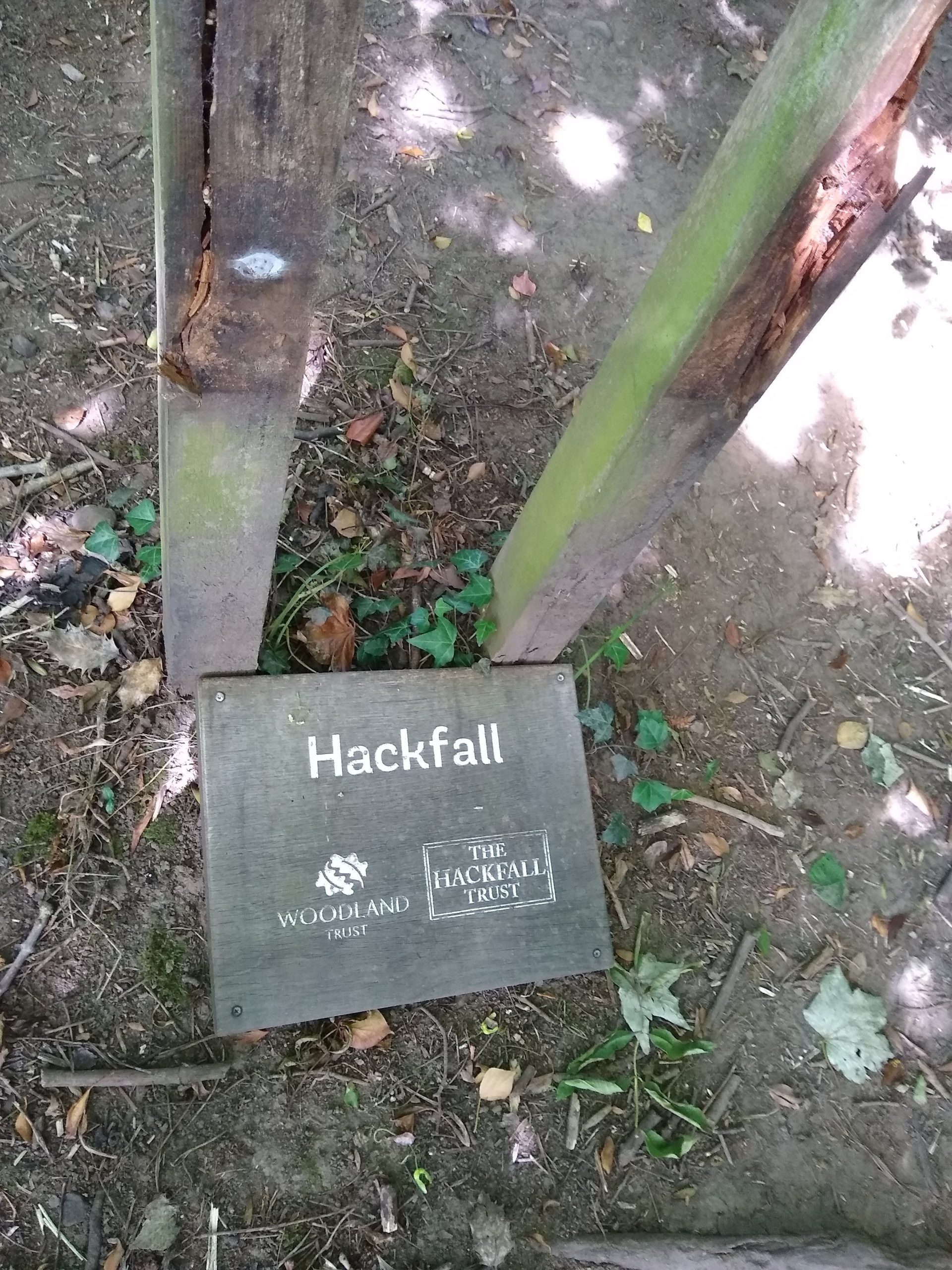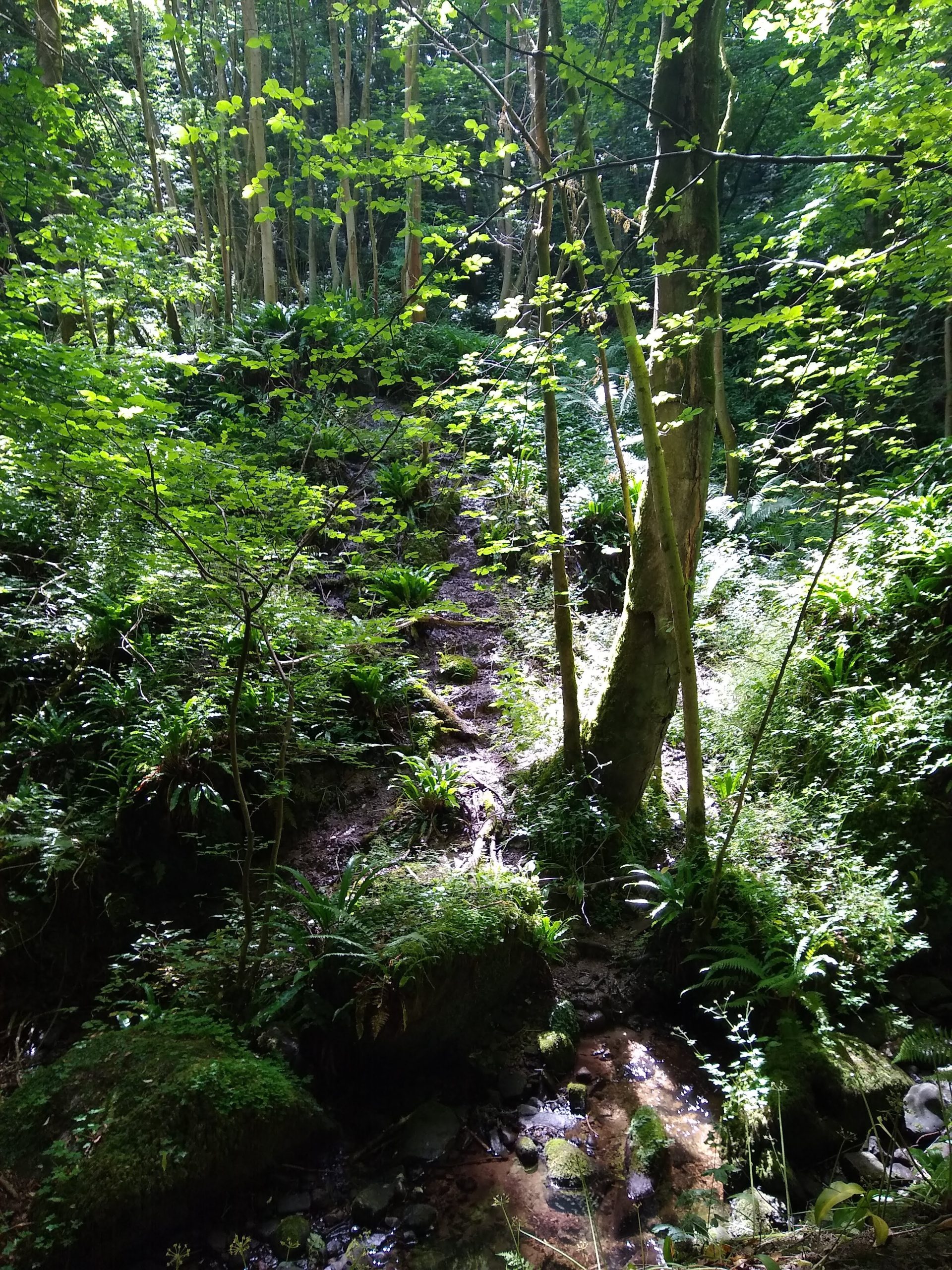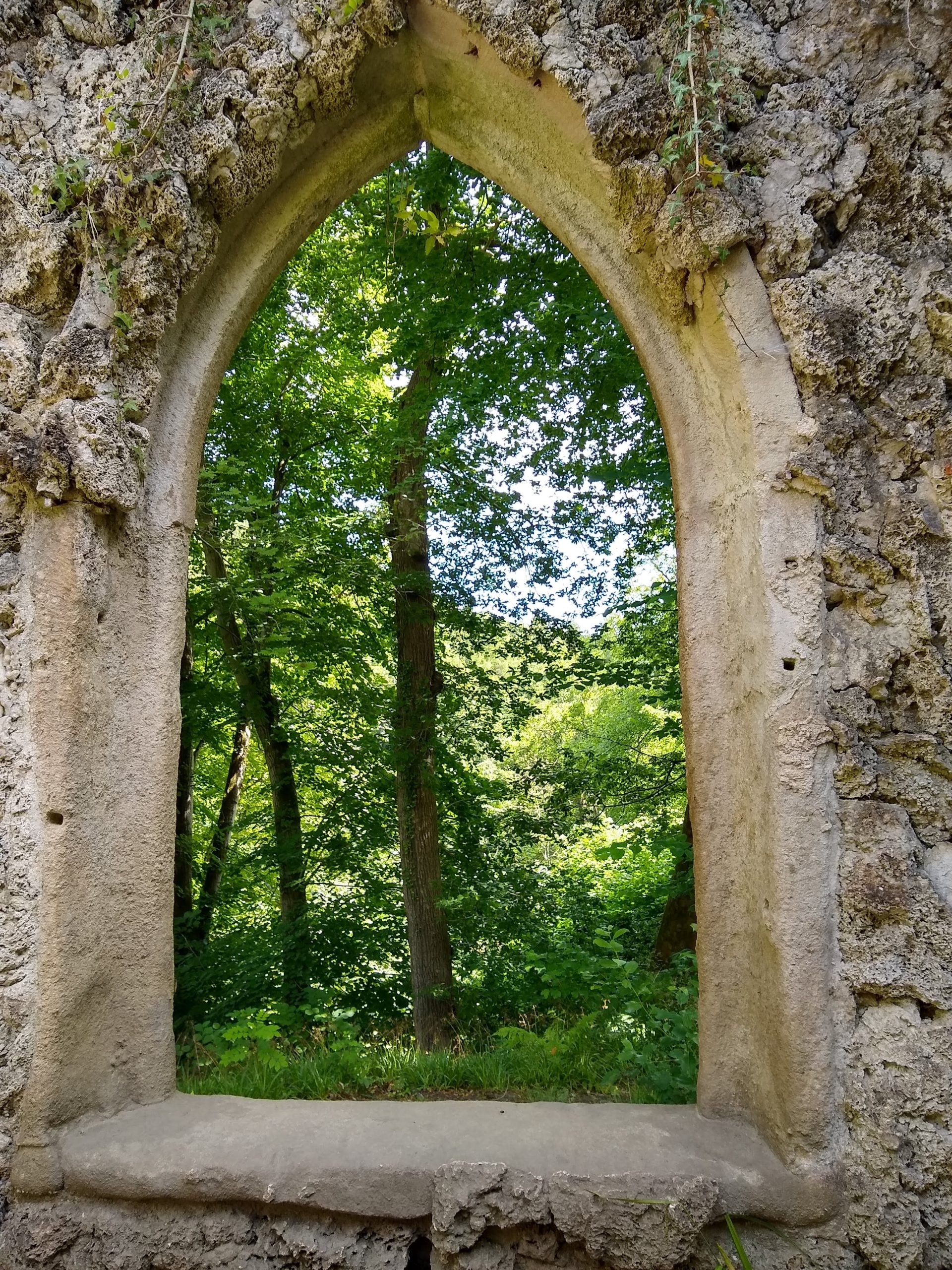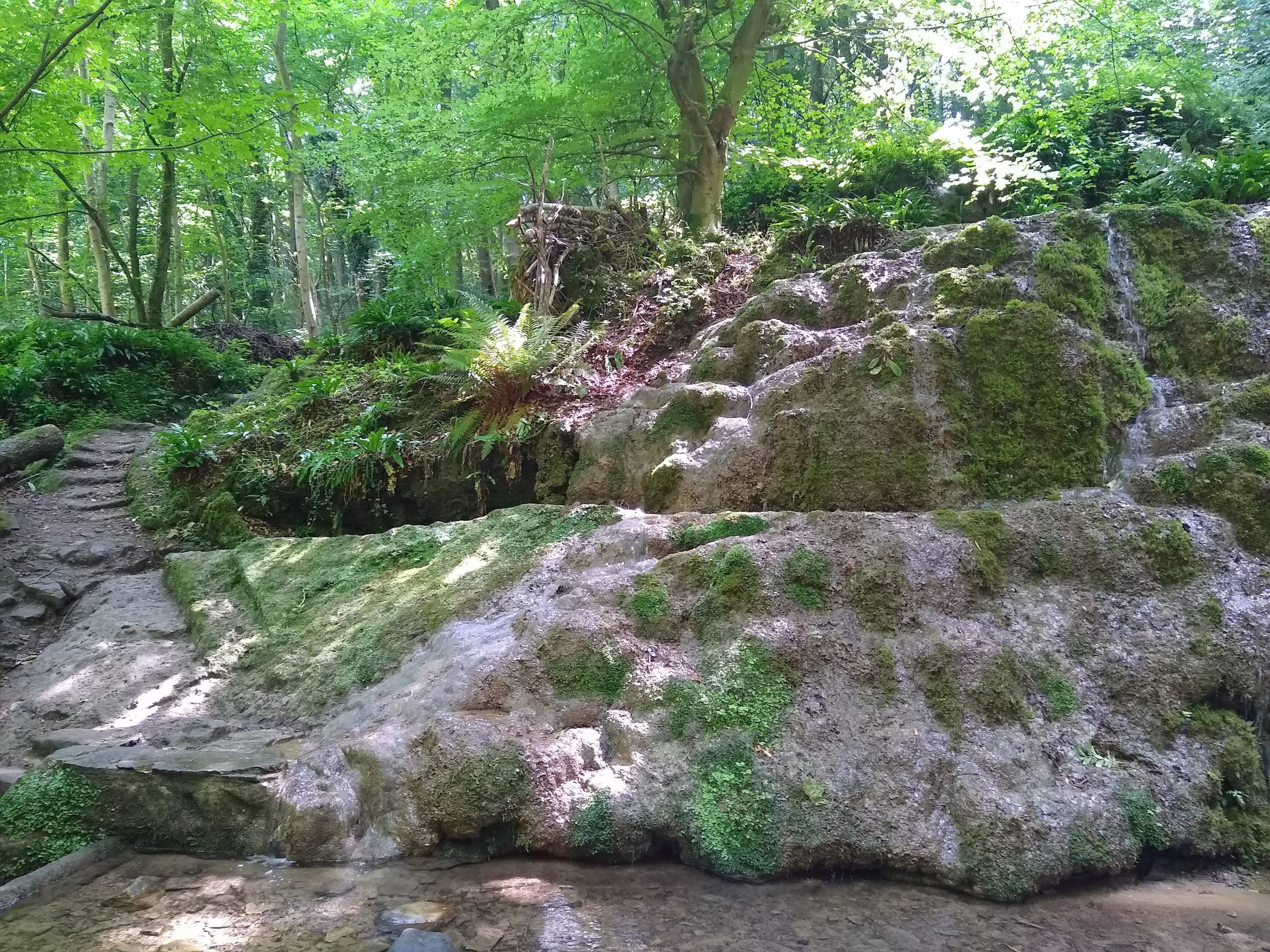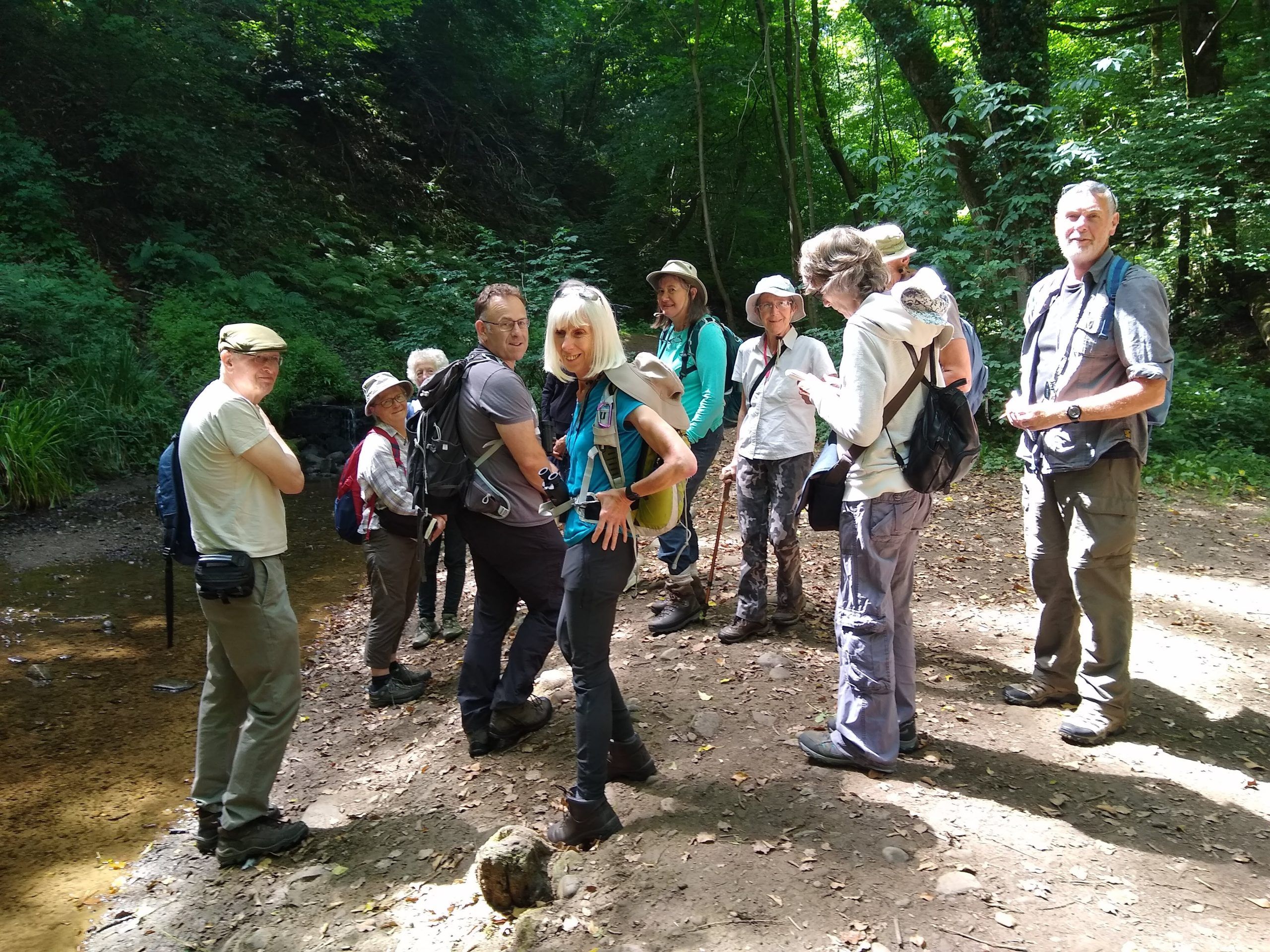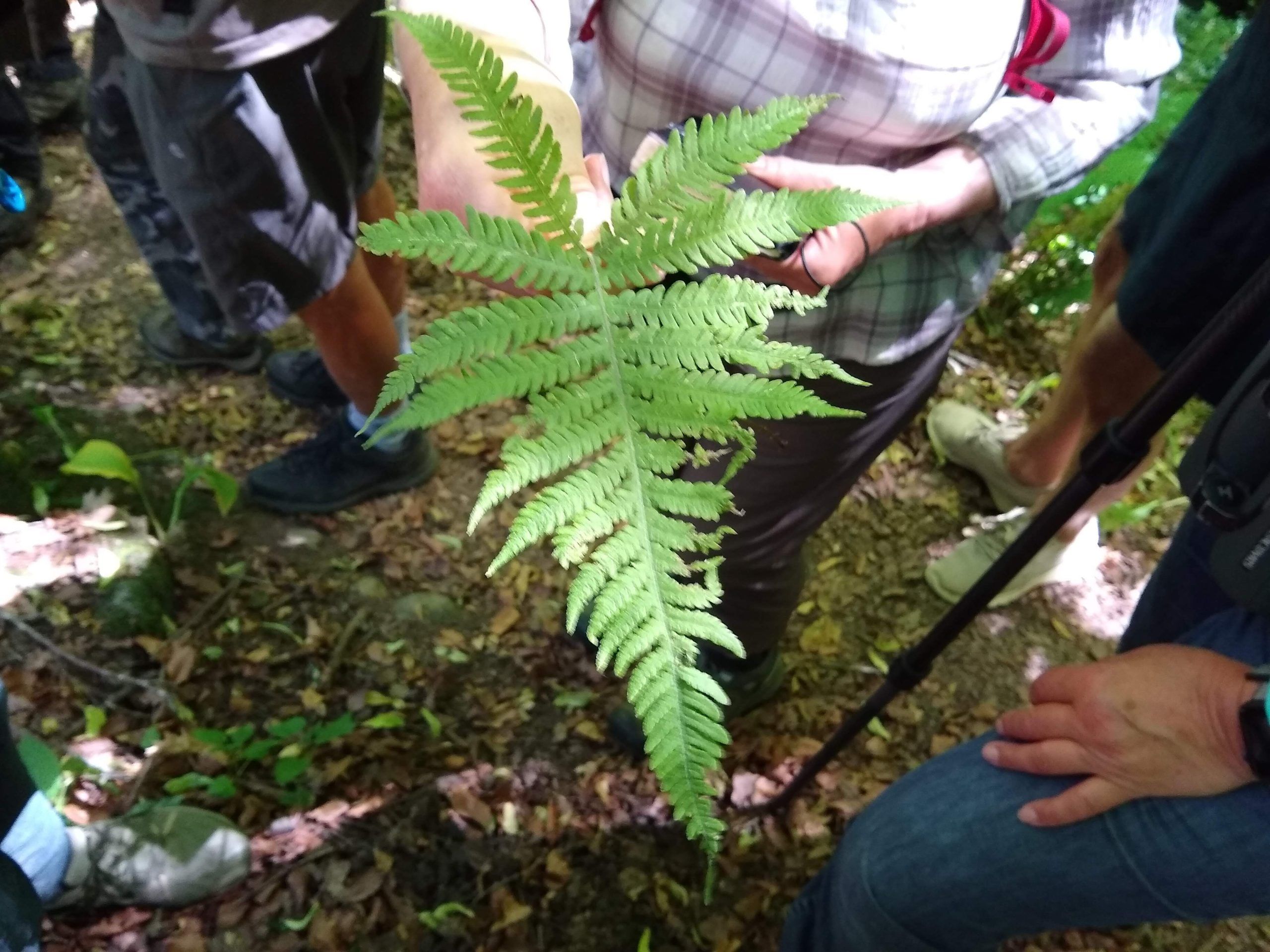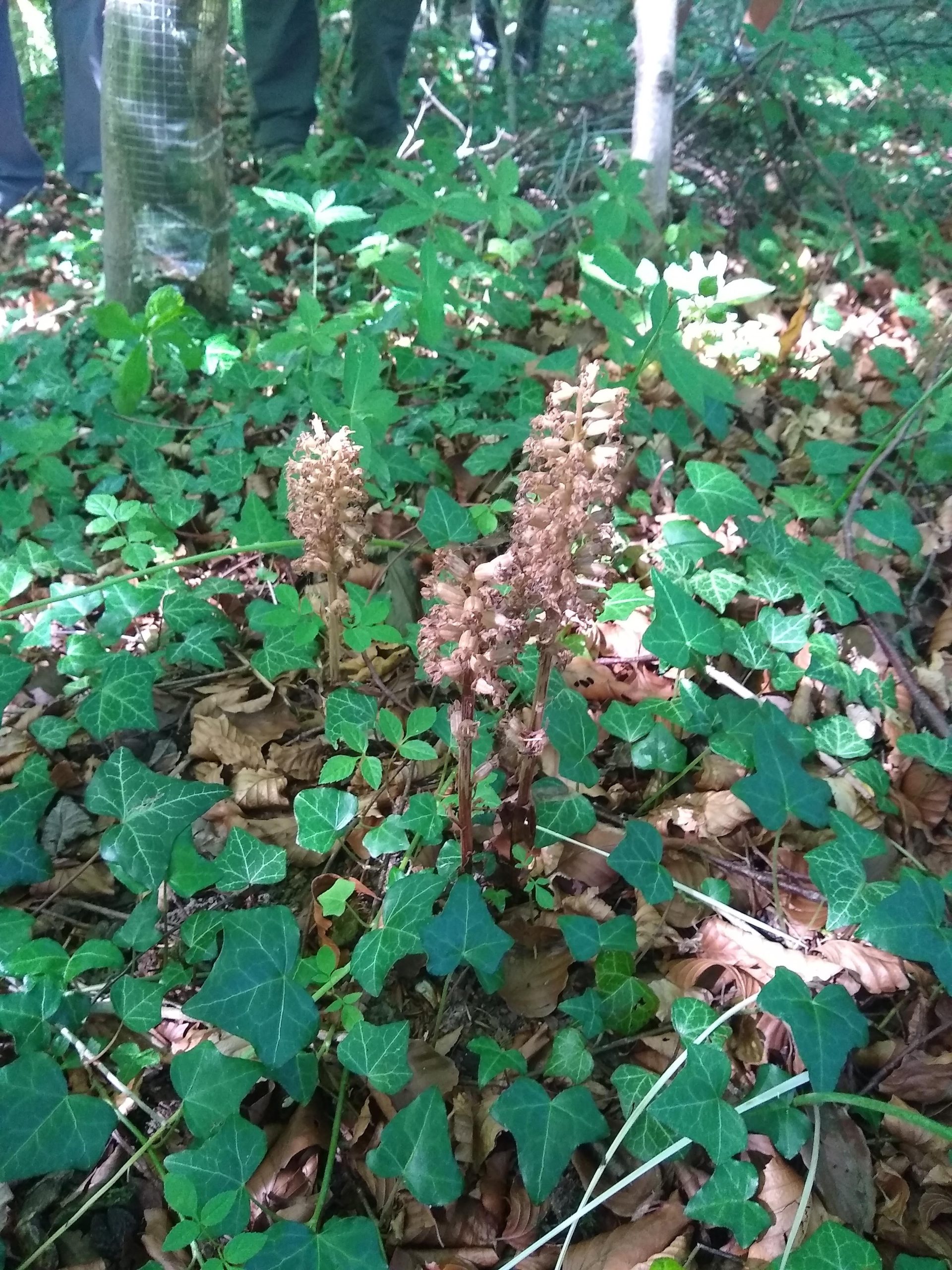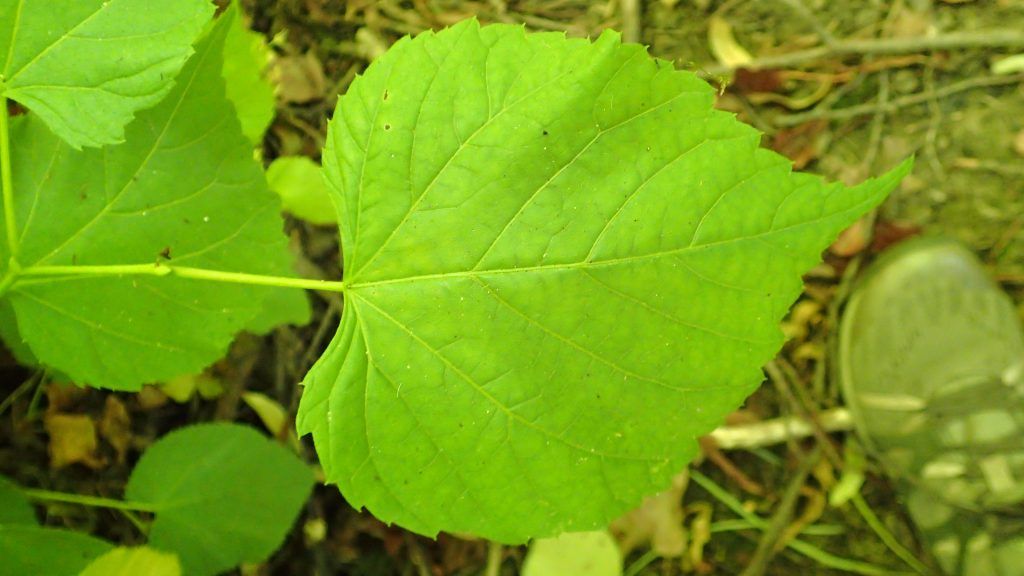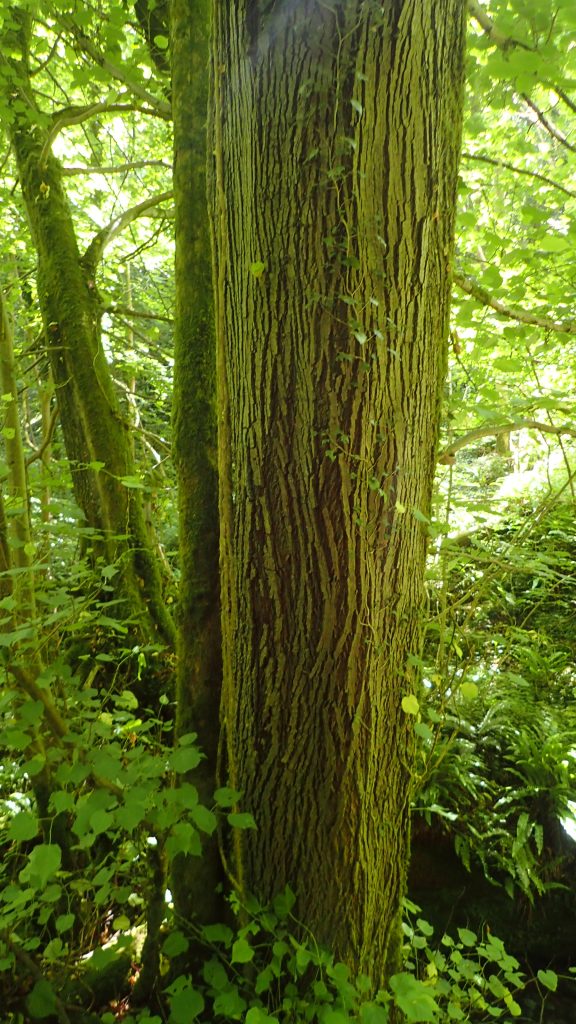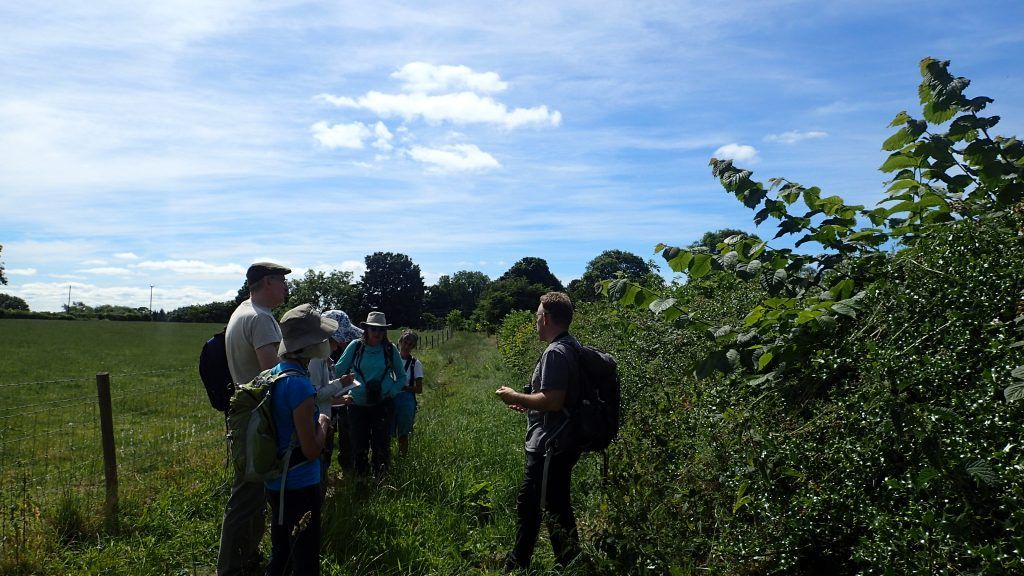14 members attended. Leader Kevin Walker
Hackfall Woods are ancient woodland lying on magnesian limestone. Although parts of them were clear felled in the 1930s some parts are thought to have been continuous woodland since the last Ice Age so have a diverse flora in the dense understorey. The underlying limestone also contributes to geological features known as tufa where calcium carbonate saturated water falls from bedding planes at the top of banks onto rock and vegetation below. This has the effect of petrifying vegetation and building up the carbonaceous deposits which may be 1000 years old.
The weather was extremely hot so woodland was an ideal place to spend our day.
We started with an interesting discussion about Wych Elm (Ulmus glabra) and English Elm (Ulmus procera), introduced despite its name. Wych Elm is native so more genetically diverse and found mainly in woods. At Hackfall its possible ancestors of the current Wych Elm have been there for thousands of years. They continue to survive despite Elm disease. Conversely the non-native English Elm is found in hedgerows and is less diverse genetically. It is more susceptible to Elm disease and tends to die back to its roots. The tree then sends out suckers which appear to regenerate the tree but when the regenerating tree reaches maybe 6m tall, the weevil is able to reinfect with the fungus and die back occurs again. Another tree with long association with the wood is Large-leaved Lime (Tilia platyphyllos) which was in fruit.
Hackfall is particularly noted for ferns, and we were treated to quite a range including Beech Fern (Phegopteris connectilis). See species list for the many others. The sedges were also well represented. We expected to see Wood Sedge (Carex sylvatica with its flowers dangling down) but were delighted by Thin-spiked Wood Sedge (C. strigosa and very similar apart from its flowers pointing upwards). Finally an unusual grass, Wood Fescue (Drymochloa sylvatica) was growing and flowering enthusiastically on the tops of boulders and on steep banks.
To round off the afternoon we visited the adjacent Mickley woods with a very similar flora. In an exciting end to a beautiful day we found Green-flowered Helleborine (Epipactis phyllanthes var pendula), Common Wintergreen (Pyrola minor) and Birds-nest Orchid (Neottia nidus-avis). The latter a first record for the wood.
Our thanks to Kevin Walker for another excellent field trip during which we learned much about fern and sedge identification.
Hazel Mitford
